Candlemas 2025
/Read reflections about our 2025 Candlemas event and watch a recording of Dr. Heaney’s reflections at the event.
Read MoreRead reflections about our 2025 Candlemas event and watch a recording of Dr. Heaney’s reflections at the event.
Read MoreMany gathered for Candlemas on a mild February evening at St. Mark’s Church in St. Paul, Minnesota. The liturgy was balm for the soul with a solemn blessing of candles, procession and sung Mass including Chant and Victoria’s Missa O Magnum Mysterium. Following Mass, we gathered in Carolyn Hall for refreshments and a reflection given by Dr. Jacob Benda, Director of Music, Liturgy & Sacred Arts at the University of St. Thomas. Dr. Benda spoke about the Transcendent Power of Music, reminding that sacred music is first and foremost about Christ and our relationship to and with Him.
Photos courtesy of Gianna Bonello, Giannabonello.com
Thank you to everyone who joined us for Candlemas on Thursday, February 2nd, at St. Clement Church in Minneapolis! It was a lovely evening with a beautiful Mass, exquisite music, a thoughtful lecture and warm fellowship.
After Candlemas, Fr. Austin Litke, OP gave an inspiring talk on “The Feast of the Presentation and Consecrated Life in the Church.” He presented Simeon and Anna as exemplars of consecrated life, a response to the Word himself being consecrated not for his own sake but as an inauguration of consecrated human nature in the Church.

On Wednesday evening, February 2nd, as darkness fell over the city of Minneapolis, the faithful gathered at St. Clement Church to receive blessed candles and allow the radiance of Christ’s Incarnation to shine forth. As the final feast of the Christmas cycle, Candlemas is an inexhaustible feast which gathers many of the themes of Christmas and presents them to us, that we may draw inspiration and encouragement. After the choir, the so-called Tenebrae Singers, finished their warm-ups and the ceremony crew had prepared the sanctuary, Fr. Spencer Howe, ‘09 UST alumnus, pastor of Holy Cross Parish (comprised of Holy Cross, St. Clement and St. Hedwig in NE Minneapolis) and co-founder of the Roccasecca Project, offered a welcome and brief liturgical catechesis.

The extended blessing of candles took place at the altar and the candles were distributed reverently to the faithful prior to their lighting and a procession around the church to recall the Christ Child’s being taken up to the temple by Our Lady and St. Joseph to present Him. Various biblical texts and reflections were chanted by the schola. Once the procession returned to the altar, preparations for Mass were made and vestments were changed from violet into white. In the traditional calendar of the Roman Rite, this feast focuses especially on Our Lady and the purification ritual she would have undertaken as part of the Lord’s presentation.


Fr. Paul Haverstock, UST Law alumnus ’09, presided at the Procession and the Holy Mass and offered a splendid reflection on the Feast, using a classic image from our tradition, one which often references Pope St. Paul VI, of a candle which gives forth light by spending itself in silent and sacrificial service. The Mass was enriched by the singing of Byrd’s Mass for Four Voices and some of Byrd’s Propers for the Feast in addition to the Gregorian chant settings. Special thanks are due to Dr. Sam Backman, director of Sacred Music at Holy Cross, who directed the choir and accompanied with the organ.
Following the Mass, we reconvened downstairs in the parish hall that was dimly lit and still decorated for Christmas. Many votive candles shimmered in this ‘final night’ of Christmastide.
In the parish hall, Bill LeMire, Roccasecca Board member introduced Prof. Collett and ended with a brief overview of the Roccasecca Project with comments and prayer by Fr. Howe. Click on photos to watch the videos.
We were honored to receive a presentation by University of St. Thomas law school professor Teresa Collett. The title of her talk was: Recognizing and Serving Christ in the Modern Catholic University. She opened her remarks by quoting 17th century philosopher Blaise Pascal who observed that “Truth is so obscure and falsehood so established that unless we love the truth, we cannot know it.” Professor Collett proposed that Pascal's observation is as true today (perhaps even more) as it was in the 17th century. She insisted that his observation may be the key to determining the path of every Catholic university, including the University of St. Thomas.
Professor Collett also invoked Pope St. John Paul II and his observation that “the purpose of a Catholic University is, first and foremost, to lead students to the truth. And the success or failure of that effort will in many ways determine the future of our society.”
Professor Collett said that when she left her previous secular, public university in Texas to join the faculty at St. Thomas, she naively believed that teaching in a Catholic university would make recognizing, knowing and serving Christ easier than in her Texas school. But just one semester at St. Thomas disabused her of that belief. She learned that most faculty and students at St. Thomas came to the school for largely secular reasons (good job, good pay, good scholarships) but not with the reason of wanting to know and love the truth, and serving and recognizing Christ in the university. This, she remarked, must change lest the large Catholic universities, including St. Thomas, drift further down a secular path, bearing almost no resemblance to an authentic Catholic University. Students must, she insisted, see in their faculty a bold confidence in the love and concern of God, and a willingness to emulate that concern in their interactions with students and faculty colleagues.
Professor Collett closed out her remarks by quoting Pope Emeritus Benedict XVI who observed that “Today it is a matter of great urgency to show a Christian model of life that offers a livable alternative to the increasingly vacuous entertainments of a leisure time society, a society forced to make increasing recourse to drugs because it is sated by the usual shabby pleasures. The Christian model of life must be manifested as a life in all of its fullness.” Prof. Collett said that a Catholic university can and must provide such a model through the lives of its faculty, staff and its students. In this way we can reverse the damage already done to our students and faculty by the false agnosticism that pervades so much of our American public life.
Professor Collett's beautiful presentation underscored the indispensability of a project like Roccasecca. A project that will engage St. Thomas, its students, faculty and alumni through the sacraments, intellectual formation and fraternal gatherings to charitably call the University of St. Thomas back to an authentic Catholic identity shorn of the secularism and modern ideologies which have caused the aforementioned damage. Roccasecca seeks to lead students, faculty, staff and alumni to the fullness of objective truth, a truth which is the only path to full human flourishing. And that truth is not some thing; it is someone: Jesus Christ.

Photo Credit: Lucas Richard Photography
They say that the first time it’s a fluke, second time it’s a coincidence, but the third time, it’s a tradition.
Or at least, just as much can be said about the Roccasecca Project during Candlemas. By now a budding tradition within the St. Thomas Catholic alumni, the Church of St. Mark hosted for the third consecutive year a Tridentine mass and seasonally appropriate lecture.
This year, Roccasecca had the distinction of hosting Dr. David Deavel, who premiered his piece on the mystery of Candlemas that was later featured in the Catholic World Report. As a Chestertonian, Dr. Deavel looked at the issue from the perspective of the “Jolly Journalist” – of the Feast of the Presentation as the fruition of the Nativity, which is itself the fulfillment of the promise God made to all men.
This promise was to illuminate what was best in man, and what was best in man is revealed in flesh at the incarnation. But as Chesterton, and subsequently Dr. Deavel noted, such a revelation can only be qualified by faith.
This was not some addition of an alien quality wholly unknown to man – something he must “evolve” into. Nor is it the actualization of some deeply-possessed potential common to all. Grace is more than just self-improvement on the one hand, or evolution on the other. Rather, it is the illumination through grace of the truth one always knew. The shepherds keeping watch over their flocks, the magi attuned to the movement of the celestial world, and those like Simeon and Anna, who kept constant vigil at the Temple, were merely brought into the fullness of a life they were already living. One as living witnesses to the light of God.
Even the demonic presences in the world react the same way. Whether it be King Herod or the devils themselves, the revelation of Christ stirred something of a deeply-held dread they heretofore could only imagine to be real. Grace to them is their natural antithesis, and they recoil from it with the same instinct as those which drive those more properly disposed to be drawn to it. Gnosticism this is not. Therapeutic self improvement this is not. It is instead the action of grace upon the soul, which the soul is free to accept or reject of its own free will. And of its own free will the soul can chose to either attempt to conceal or reveal the light that God sends upon the world.
Photo Credit: Zachary Jones
Conviviality was the prevailing wind of the day, at least figuratively, as we gathered in Kolbe Hall at Holy Cross Catholic Church on April 15th in the midst of the Tax Day Blizzard of 2018. Already, an hour before the first events of the afternoon, the hall was veritably bustling with people from the parish, from the University of St Thomas, clergy from the Archdiocese, and more friends from Italy than I’ve ever had the pleasure of encountering in one day. We had a purpose, a mission for gathering which was somewhat academic and practical but was primarily as convivial as the atmosphere. The “Church that Moves the World” was present in the community that was gathering on a decidedly white spring afternoon.
It was easy to tell, as a relatively low man on the proverbial totem pole, that there was some movement happening in that parish hall. Names were exchanged, and hands shaken with people from across the region, from the top of the academic and ecclesiastical ladder to people like me, the room was packed with people in every position that were ready to revive Catholic culture. This had to be a topic worth our careful consideration and attention.
Fr Howe set the tone as such with his opening remarks and recollections of his own time spent in Italy with the Tipi Loschi and the formative character of their community. A brilliant and, I think, unintended side effect of Father’s opening story was the familial conversation that it began. Indeed, the rest of the talks of the afternoon had the air of (sometimes) parents lovingly imparting wisdom, brothers and sisters sharing help with one another, and children receiving graciously from teachers.
Fr. Cassian Folsom OSB, all the way from Norcia, Italy, shared his insights on how to interact with the modern Western culture. Marco Sermarini, also visiting from Italy, spoke to the group about how the Saints give us aid and pray for the family of the Church here on Earth. Dr. Michael Naughton, Director of the Center for Catholic Studies at UST, gave an academic look at the conversation of the family within the Church which followed Marco’s entreaties well. Finally, Dr. Catherine Deavel from the Philosophy Department, UST, talked about the need for friendships and the types of friendships presented in Aristotle and other philosophical schools of thought.
Following the afternoons talks, and the intermissive happy hour featuring Birra Nursia brewed by Fr. Cassian and his brethren, the majority of those gathered made our way over to the church to spend time in contemplation before the Blessed Sacrament of what it was the Lord had called us to throughout the day. After sung Vespers and Benediction, the church began to fill with parishioners joining us for the usual Sunday evening Holy Mass. The family came together, with the Saints and Angels, to worship the Lord in the most proper and intimate way we could, by totally receiving Him in the Eucharist. It was the perfect capstone, or perhaps, cornerstone, to tie the whole day together and to remind us why, exactly, creating a Catholic culture is necessary.
“We do not want, as the newspapers say, a church that will move with the world. We want a Church that will move the world.” – Gilbert K. Chesterton
God love you,
Kyle Etzel, Catholic Studies ’17, Seminarian of the Archdiocese of St Paul and Minneapolis
“For his sake I have accepted the loss of all things and I consider them so much rubbish, that I may gain Christ and be found in him, not having any righteousness of my own based on the law but that which comes through faith in Christ, the righteousness from God, depending on faith to know him and the power of his resurrection and [the] sharing of his sufferings by being conformed to his death, if somehow I may attain the resurrection from the dead.” -Philippians 3:8-11
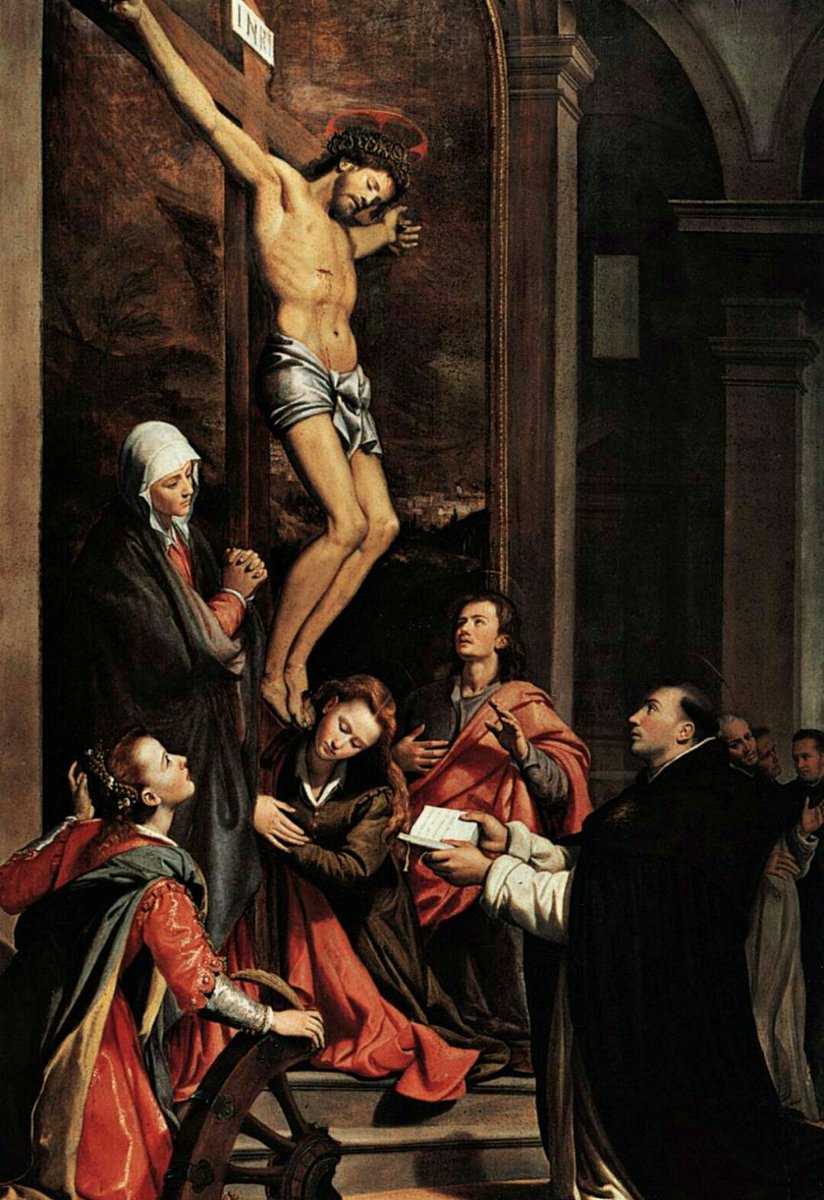
St. Paul was clear about his need to receive the transforming power flowing from Christ’s death and resurrection. Where do we look to find not only virtue embodied but also the efficacy by which we ourselves may become virtuous? Our patron St. Thomas Aquinas directs our attention to the Cross of Christ as the exemplification of every virtue. In the below text taken from the Office of Readings for his January 28th feast, we are invited to ponder Christ on the Cross as the example of the virtuous life which is open to us by grace. Let us go there with him, and the Saints of every age, who have taken their place beneath that wellspring of virtue. May the waiting and watching of these holiest days draw us to aspire after growth in every virtue. Let us seek His example, we who have so much need of encouragement of the possibility of our ever-fuller transformation in Christ. Lent is undoubtedly a season for growth in holiness, but so too are the fifty days of Easter celebration.
From all of us at the Roccasecca Project, we wish you a graced celebration of Christ’s Resurrection and look forward to being together in the radiance of the Easter Season for our next gathering on Sunday, April 15th. It will be a leisurely afternoon of faith, inspiration and friendship in Christ, entitled “A Church that Moves the World”. Special guests include friends from Italy: Fr. Cassian Folsom, O.S.B., founder of the Benedictine Monastery of Norcia, Marco Sermarini, founder of the Tipi Loschi and Scuola Chesterton of San Benedetto del Tronto and president of the Italian Chesterton Society. Additionally, Dr. Michael Naughton, Director of the Center for Catholic Studies and Dr. Catherine Deavel, professor of Philosophy at the University of St. Thomas will round out the lineup of speakers. The topics of reflection will center on the discovery of the Communion of Saints and friendship as essential to the Church’s mission and the task of renewing and rebuilding Catholic culture. A special feature, along with refreshments and Italian appetizers, will be a tasting of Birra Nursia: a beer brewed by the Monks of Norcia. The afternoon will conclude with Sung Vespers and Benedictine and a chance to remain for confession and Holy Mass. What a way to spend a Sunday afternoon!
For more information on this upcoming event that will be hosted at Holy Cross Catholic Church in Northeast Minneapolis click here. You can visit the Holy Cross parish website.
May God bless you and yours,
The Roccasecca Project
And now St. Thomas Aquinas has a word for us:
The Cross exemplifies every virtue
Why did the Son of God have to suffer for us? There was a great need, and it can be considered in a twofold way: in the first place, as a remedy for sin, and secondly, as an example of how to act.
It is a remedy, for, in the face of all the evils which we incur on account of our sins, we have found relief through the passion of Christ. Yet, it is no less an example, for the passion of Christ completely suffices to fashion our lives. Whoever wishes to live perfectly should do nothing but disdain what Christ disdained on the cross and desire what he desired, for the cross exemplifies every virtue.
If you seek the example of love: "Greater love than this no man has, than to lay down his life for his friends." Such a man was Christ on the cross. And if he gave his life for us, then it should not be difficult to bear whatever hardships arise for his sake.
If you seek patience, you will find no better example than the cross. Great patience occurs in two ways: either when one patiently suffers much, or when one suffers things which one is able to avoid and yet does not avoid. Christ endured much on the cross, and did so patiently, because when he suffered he did not threaten; he was led like a sheep to the slaughter and he did not open his mouth. Therefore Christ’s patience on the cross was great. In patience let us run for the prize set before us, looking upon Jesus, the author and perfecter of our faith who, for the joy set before him, bore his cross and despised the shame.
If you seek an example of humility, look upon the crucified one, for God wished to be judged by Pontius Pilate and to die.
If you seek an example of obedience, follow him who became obedient to the Father even unto death. For just as by the disobedience of one man, namely, Adam, many were made sinners, so by the obedience of one man, many were made righteous.
If you seek an example of despising earthly things, follow him who is the King of kings and the Lord of lords, in whom are hidden all the treasures of wisdom and knowledge. Upon the cross he was stripped, mocked, spat upon, struck, crowned with thorns, and given only vinegar and gall to drink.
Do not be attached, therefore, to clothing and riches, because "they divided my garments among themselves." Nor to honours, for he experienced harsh words and scourgings. Nor to greatness of rank, for "weaving a crown of thorns they placed it on my head." Nor to anything delightful, for "in my thirst they gave me vinegar to drink."
From a conference by Saint Thomas Aquinas, priest, Collatio 6 super Credo in Deum
For the second time in the history of the Roccasecca Project, clergy, seminarians, religious and lay faithful gathered to celebrate the Purification of the Blessed Virgin Mary and to contemplate the role of light in the Christian life. The Church of Saint Mark made for a beautiful, hospitable setting once again. Of course, the premier means of contemplating the Light this evening was in the Holy Sacrifice of the Mass in the Extraordinary Form of the Roman Rite. Dr. Mark Spencer’s reflection on light in the Christian life could not have been a more apt continuation of the night.
As a board member of Juventutem Twin Cities, one of the newest young adult ministries in the Twin Cities, it was a two-fold pleasure to be co-hosts with Roccasecca Project. Our two groups are both particularly supportive of the wider use of the Extraordinary Form (EF). To be able to help Roccasecca bring the EF to a group of people who may not be familiar or comfortable with its means of worship and praise is integral to the mission of Juventutem TC. Second, as a UST alum on a board of current students and alumni, it is also a wellspring of joy for us to be a part of the celebration of this beautiful liturgy to the community which nurtured our education.
This Mass, and the procession it began with, are particularly well-suited to making clear to us that the Light came into the world. The blessing, distribution, and lighting of candles for the procession begin the liturgy. Fr. Bryan Pedersen, celebrant, received and blessed the candles to be used by the congregants in the procession and throughout the Mass. It is most fitting that the rest of us present approached the altar to receive our unlit candle and, in silence, blessed it with a kiss upon reception. That action of intimate benediction commended us by the Church in the prescriptions of the Rituale Romanum communicates to us and through us the joy we should have in receiving the Light that is Our Blessed Lord.
Furthermore, the EF provided us the opportunity to physically orient ourselves toward the Lord in our worship. Practically speaking, in a darkened home in the wintery months we must move toward the lit rooms or sources of light to do anything after sunset. Naturally, then, we should logically be oriented toward the Lord, the Light of the World, in the celebration of the Mass. The Latin phrase ‘ad orientem’ is often used to describe this posture for the priest during the Mass and is derived from the fact that Our Blessed Lord, as the Light of the World, is expected in the east (orient) in His second coming, prefigured by the sun’s rising. Praised be God for these deep traditions in the Liturgy.
After the Mass and some community time, Dr. Mark Spencer regaled the remaining crowd with a very enlightening reflection on how the light of Our Blessed Lord can and ought to permeate our lives as Christians. Dr. Spencer’s contribution as a philosopher provided us with a means to marry faith and reason in the events of the evening, particularly in his use of some of the philosophical thought of the Angelic Doctor and patron of the Roccasecca Project.
To be a part of the evening, as participant and co-host, was a distinct joy. I left with a great deal of hope for the future of the University community and of the younger components of the Catholic community of the Archdiocese of St Paul and Minneapolis. If we young adults, St Thomas alumni, young families, intercessors can keep our whole selves oriented toward the Light of the World in prayer, worship, and daily work, then there is reason to rejoice.
God love you,
Kyle Etzel, Catholic Studies ’17, Seminarian of the Archdiocese of St Paul and Minneapolis
Listen to Dr. Mark Spencer's talk from the evening below.
























We gathered on the eve of battle to keep vigil. Professor Robert Delahunty of the St. Thomas Law School transported our band of brothers into the midst of one of the greatest naval battles in European history: the Battle of Lepanto. In 1571, a coalition of European armies joined together under the heroic leadership of Don Juan of Austria. Their goal was to stop the aggressive arm of the Ottoman Empire from sweeping through the Italian peninsula. The most notable event from this battle is the apparition of Our Lady to Pope St. Pius V at the moment of the Christian victory. Under her intercession, the Christian armies were able to overtake the unstoppable Ottoman Empire on October 7. Given Our Lady’s intercession in this great moment in Christian history, October 7 has been deemed the feast of Our Lady of the Rosary.
On the anniversary of the victory, friends and families of the Roccasecca Project joined together for Mass and rosary at St. Mark’s parish to commemorate the feast of Our Lady of the Rosary and to pray for peace and our alma mater. Some additional opening and closing prayers said during the rosary also reminded us of the 100 year anniversary of the apparition of Our Lady of Fatima. Behind the chapel of St. Thomas Aquinas on campus, there is a statue of Our Lady of Peace (or Victory) holding both a sword and a rosary.
These symbols are images that remind us both of the Battle of Lepanto and the Fatima apparitions. We are reminded that there are battles to be won for God on Earth, both spiritually and otherwise. By gathering for Mass and the rosary, followed by the Angelus in front of Our Lady of Victory and fellowship amidst Homecoming celebrations, we are strengthened to go back out into the deep.
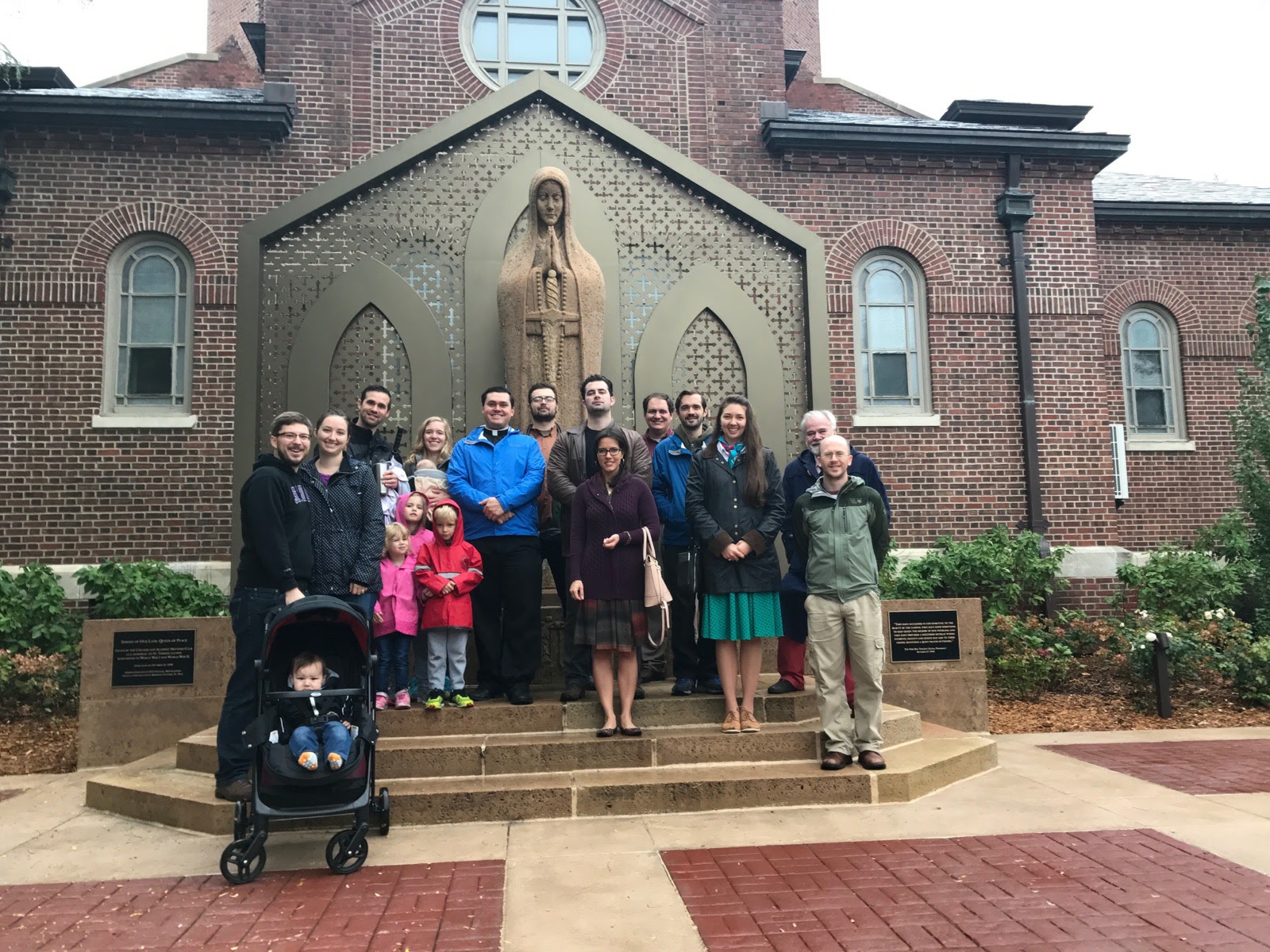
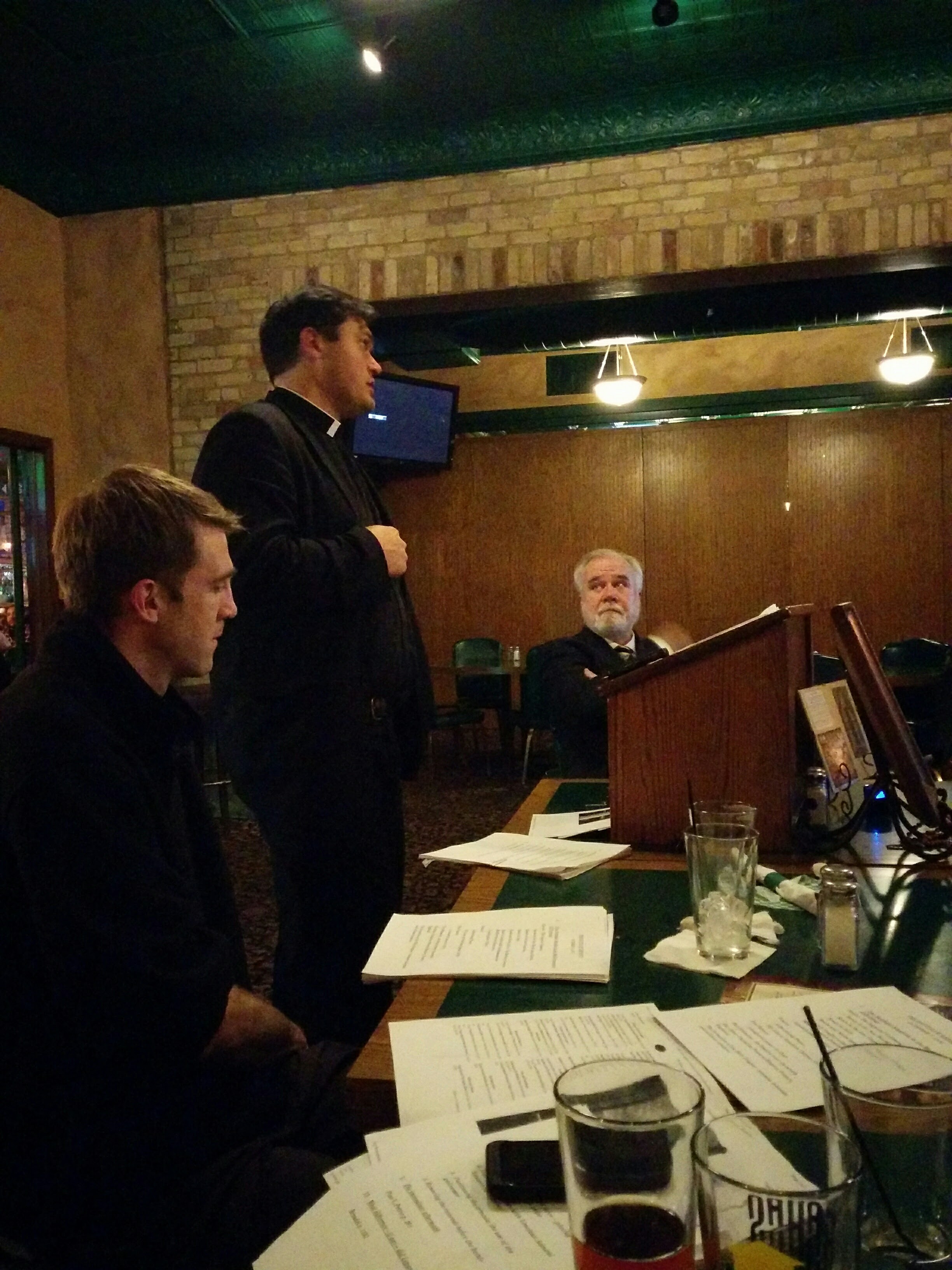
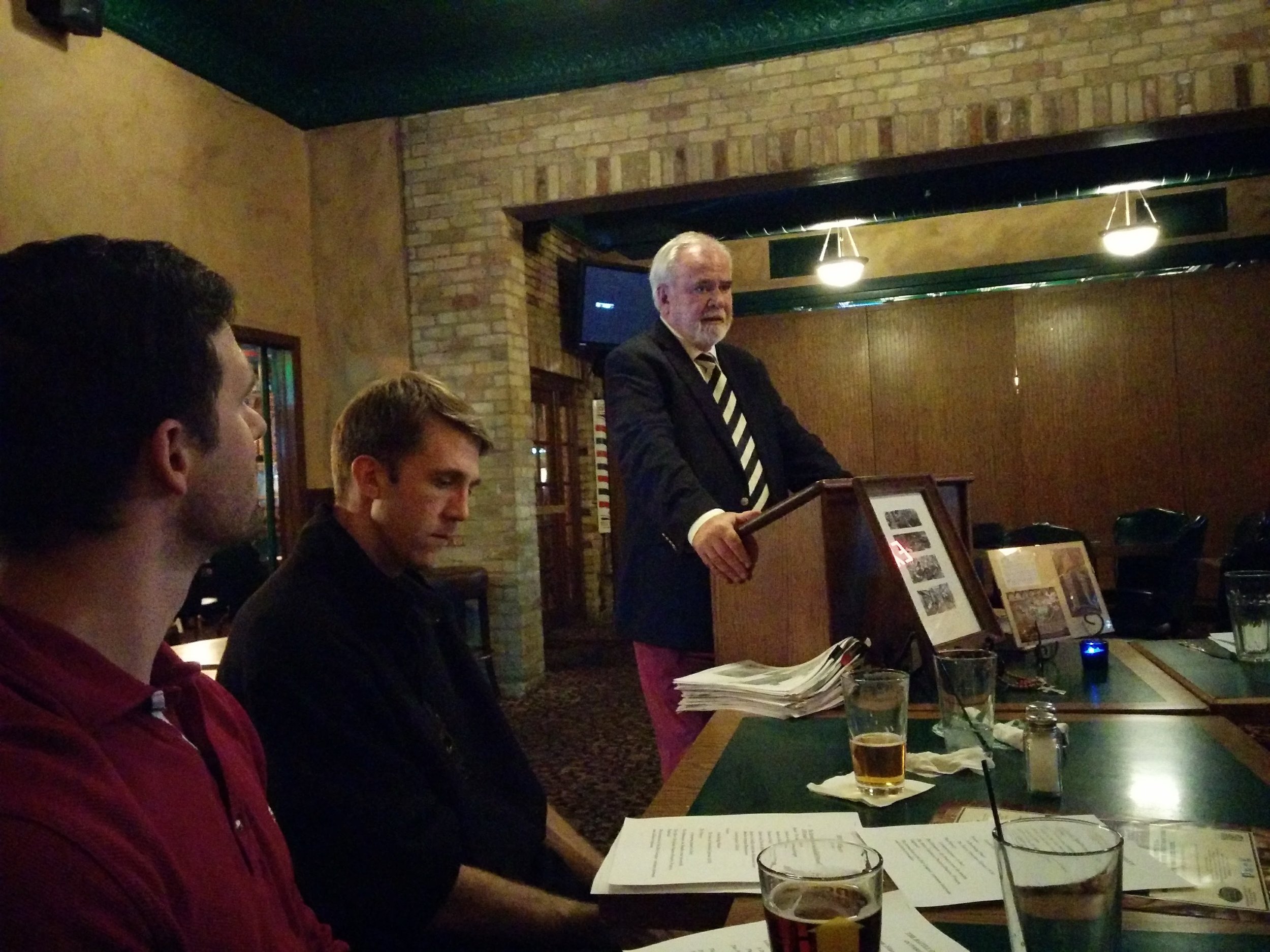
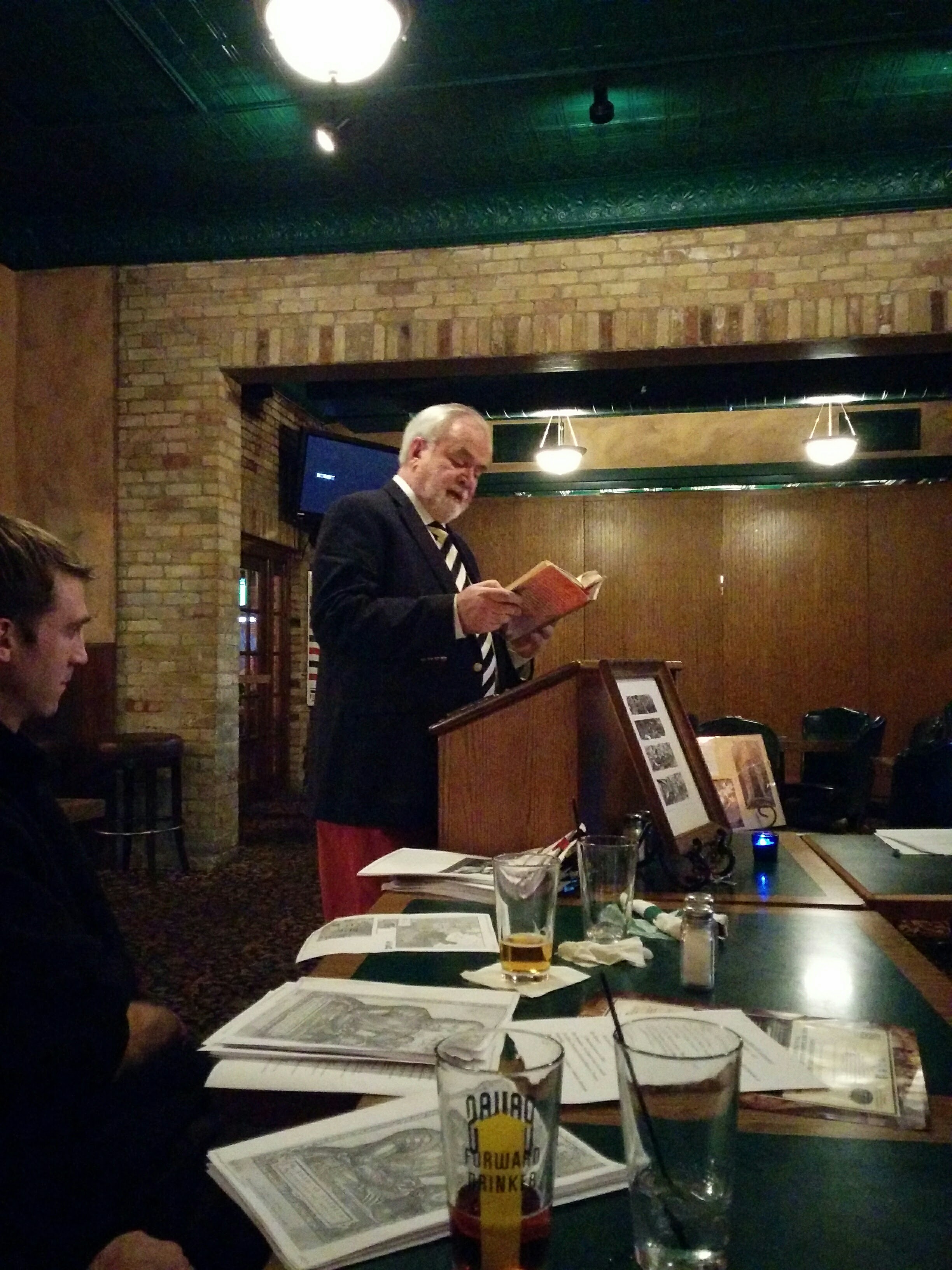
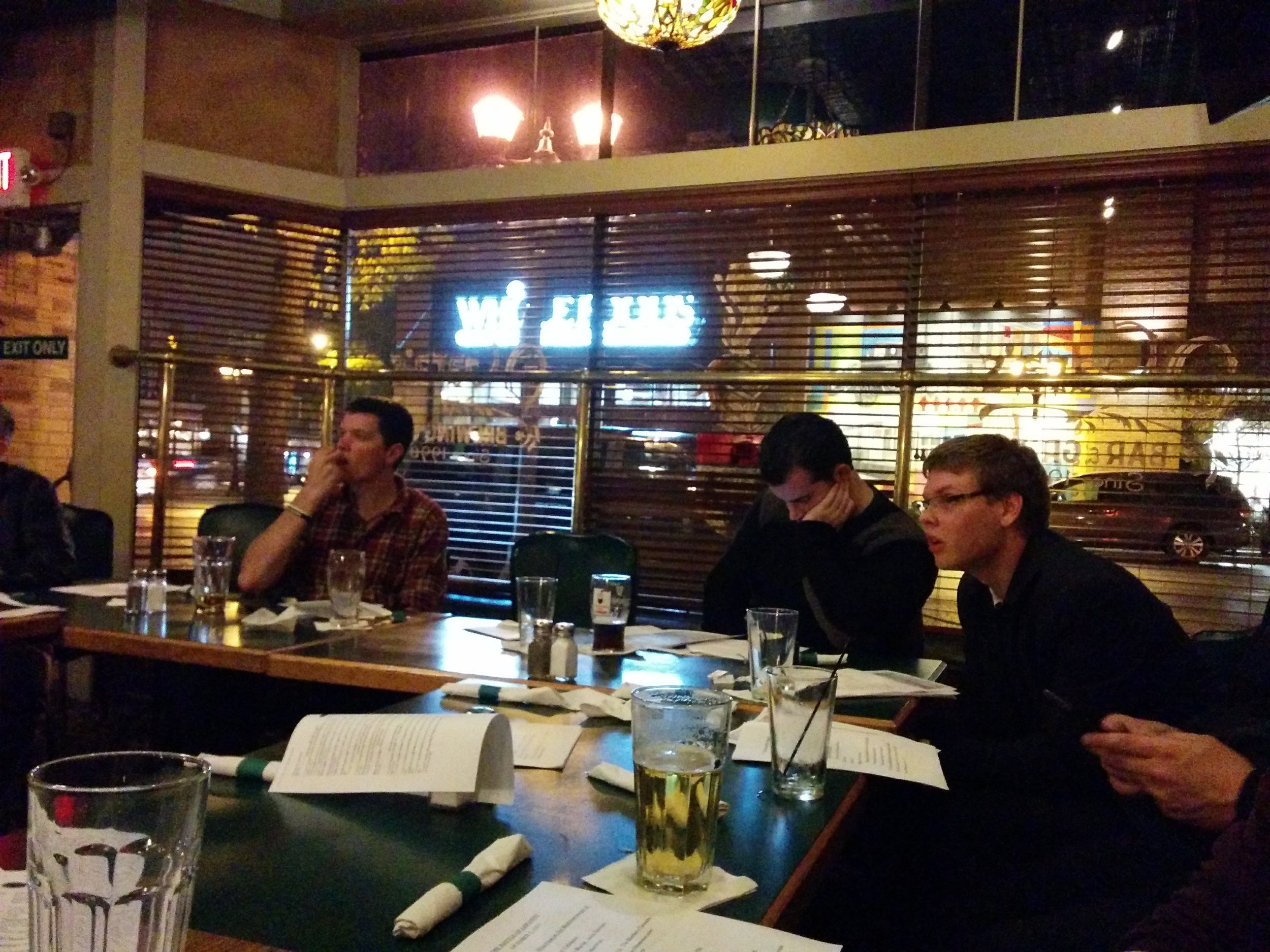
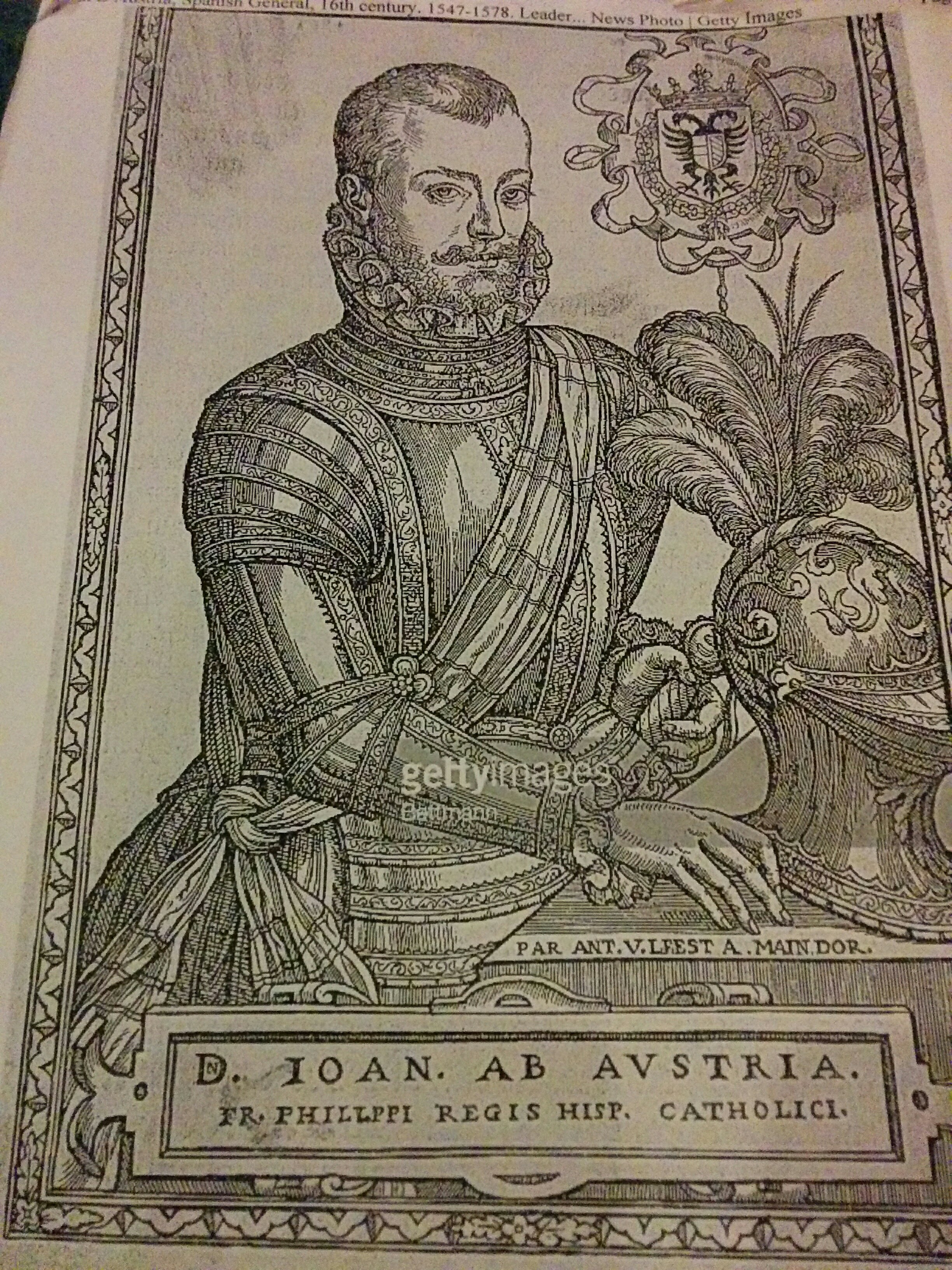










"Do not cling to me" (John 20:17) - do not seek human securities or the vainglory of this world but faith in the Living, Risen Christ
Read MoreIt is chastity, as Thomas Aquinas says, that allows grace to be fully seen and received. “Blessed are the pure in heart, for they shall see God.”
Read MoreIt is in the wounds of Christ the Church builds its nest and waits, for it is in the Passion of Our Lord that she places her hope of salvation
Read MoreThe Church follows Christ into the dryness of the wilderness with the expectant hope to discover streams of life-giving water.
Read MoreProcession and Holy Mass in the Extraordinary Form of the Roman Rite:
Feast of the Purification of the Blessed Virgin Mary Mary
Church of St. Mark
St. Paul, MN
The Roccasecca Project is a cultural apostolate under the patronage of the Angelic Doctor, made up of alumni of the University of St. Thomas in St. Paul, Minnesota. We remain engaged in the life and future of our Alma Mater by fostering friendship and collaboration among alumni and students. Grateful for what we have received during our time as students, we resolve to build upon it and create opportunities for further intellectual and spiritual formation.
Powered by Squarespace.